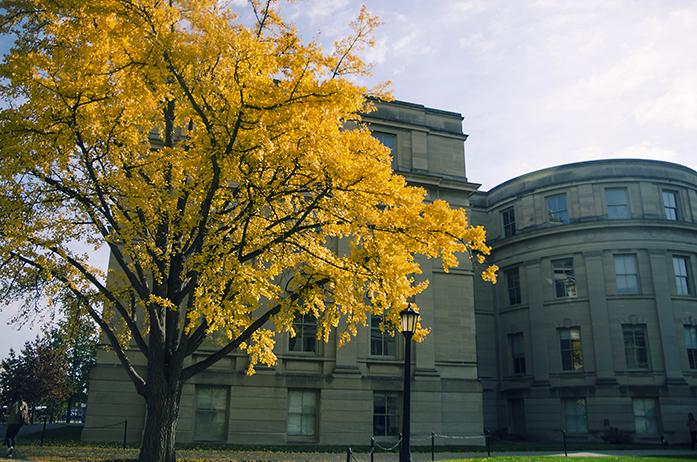By Molly Hunter
The city of Iowa City’s first ever comprehensive tree inventory is underway.
The city has contracted Plan-It Geo, a Colorado firm specializing in geospatial urban forestry, to conduct the tree inventory. Plan-It Geo will take an inventory of up to 50,000 trees in Iowa City, making the inventory the first in the city’s history on such a large scale.
“I believe that there was an attempt at an inventory 15 to 20 years ago, but I don’t think it was ever completed,” said Superintendent of Parks and Forestry Zachary Hall. “I think it was done in-house.”
Andrew Dahl, a University of Iowa arborist, said he believes the inventory is long overdue.
“I’m a big proponent of [tree inventories],” he said. “It would real hard to manage urban forests without one. I just don’t see how you could possibly do it, I’m very excited about it.”
Hall said the inventory will only be taken for trees located on city-owned property. The inventory has begun, starting with trees located on city-owned medians and right-of-way areas. After this is completed, the plan is to move on to trees located in city parks.
Because of the discovery of emerald ash borers in Iowa City last spring, the location and health of ash trees is also a concern. Emerald ash borers are an invasive species that destroys the population of ash trees.
“[The inventory] will help us identify specifically where those ash trees are,” Hall said. “It’ll give us a count, a specific number, a specific location, and what the health is of those trees.”
A tree inventory will, Dahl said, provide valuable information for dealing with the invasive beetle.
“With emerald ash borer, you want to know how many trees you’re going to have to remove or treat.”
The city is looking even further into the future, Hall said, because there may be concern for the maple-tree population in years to come.
“The next pest and disease that’s kind of on the forefront of urban foresters right now is the Asian longhorn beetle, and they attack maples,” he said. “And we know just from anecdotal evidence that we have a lot of maples as well.”
Trees with infestations or other health issues will be given first priority for removal and replacement. Meanwhile, the inventory will identify areas in need of tree planting. Determining the current location and health of its trees will help the city plan.
Aside from location, the arborists look for several other pieces of information, including the species, size, condition, and health of each tree.
“It gives you [the] overall composition of the urban forest, the types and distribution of species, in order for the city to diversify the species for the future,” said Plan-It Geo tree-inventory manager TJ Wood.
These details will also aid in risk-management efforts in the future. As they take inventory, the arborists have a clearance conflict field that examines the potential hazards posed by nearby buildings, utilities, and landscape.
“After you take all this into consideration, you gauge the probability of a part of the tree failing, whether that failure will affect a target, and calculating an overall risk for these trees,” Wood said.
The risk-rating component gives the city a list of high-risk trees needing attention. The city’s job is to then mitigate the risk, possibly by removing the tree or doing crown cleaning or pruning jobs for maintenance.
As Wood gathers data and plots each tree’s location on a map, it can be viewed online.
“We have a software that we build in-house called Tree Plotter, and [TJ] has that on his tablet,” said Ian Hanou, the owner of Plan-It Geo. “It’s web-based, so the city [officials] can be sitting at their desks and see the data get collected every minute in real-time.”
Hanou said one arborist may take inventory on up to 300 trees each day. However, with only one arborist at work, it may take several months to complete the inventory for 50,000 trees.
Currently, Wood is the only arborist taking inventory, working part-time throughout the winter.
“Once spring hits, we’re going ramp it up to two to three arborists in the field at once,” Wood said. “We should be done by late July or September.”
Once the tree inventory is complete, the city will have its own copy of the data.



